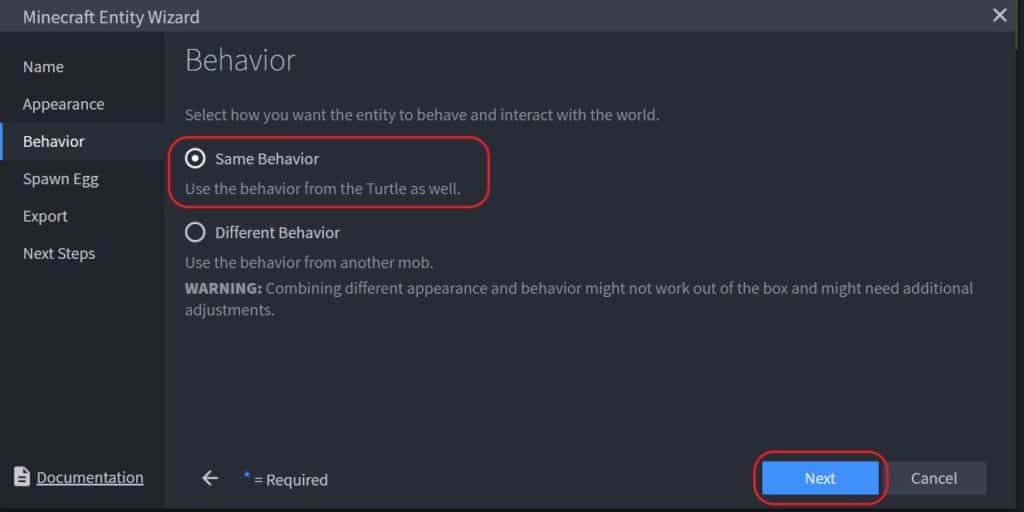
You can create the texture in a regular image editor, such as Paint.NET or Photoshop. Custom Texture: Select a custom texture for your spawn egg icon.Colors: Use the two-color pickers to select the background and foreground colors on the default spawn egg icon.There are three ways to define the spawn egg: The spawn egg tab allows you to set the spawn egg that is the item used to spawn the custom entity. As an example, if you mix the appearance of a wolf with the behavior of a sheep (a sheep in wolf's clothing), you will quickly notice that the wolf in Minecraft does not come with a grazing animation, so it will look like the grass below them just pops off. It is recommended for beginners to use the behavior from the same mob as the appearance, to avoid conflicts.Īppearance and behavior often work hand in hand. To navigate the wizard, use the Back and Next buttons at the bottom of the screen. The wizard will guide you through the steps required to create your custom entity. Click the Let's Go-button to get started.Alternatively, navigate to Filter and select Create Bedrock Entity to open the wizard.Click the yellow banner on the start screen to open the wizard.Once the plugin is installed, you can use the Minecraft Entity Wizard to start creating your entity.
Blockbench export java install#
Click on Install to add the plugin to Blockbench.Locate the plugin Minecraft Entity Wizard, either by scrolling through the list of available plugins, or via the search box.In Blockbench, navigate to File and select Plugins.Most parts of the program work the same in the web app, but saving files requires a few extra steps. This is also featured in the Block Wizard documentation.If you do not want to install the app, or you are using a mobile device like a tablet, you can also use the plugin in the Blockbench web app. Share with the Minecraft team building creator tools! Post on Twitter with #MinecraftCreator and tag and and Tutorialsįor the Block Wizard, we highly recommend watching the tutorial below, created by Jannis.
Blockbench export java download#
Install Minecraft: Bedrock Edition and/or Minecraft Preview (pro-tip: you can download Bedrock Edition and Preview via the Minecraft Launcher– download from the Microsoft Store.)Īdd the Block Wizard plugin to Blockbench by navigating to File -> Plugins -> Search for “Block Wizard” and install.Ĭreate your own block, activate it as a resource/behavior pack, and then play in-game! That means entities will properly collide with your custom blocks, and things like flowers are now possible because collision can be complete disabled! Yay! With the release of the 1.19.50 update, we've released the collision_box component out of experimental. Seeing block properties in the context of a UI also makes tinkering with files a lot easier!įor experts, a huge benefit to the Block Wizard is that the administrative work of generating the resource/behavior pack files is done for you, so that you can save time and get right to the fun part of designing your block and directly modifying the code. The Block Wizard is like the Entity Wizard, but for blocks.įor beginners, the Block Wizard adds a layer of visualization to customizing how a block behaves and appears, and you can easily then use it in-game without ever needing to modify the files.

Introducing the Minecraft Block Wizard! The learning curve for creating blocks can be quite steep in Minecraft: Bedrock Edition, but thanks to our friend Jannis at Blockbench and the recent block geometry update, making custom blocks has never been easier!
Blockbench export java how to#
Are you overflowing with ideas for custom blocks you want to create for Minecraft: Bedrock Edition, but also overwhelmed with how to get started? While we do have some helpful and hefty guides on how to create them, what would you do if there was an easier way to generate all the complex bits and bobs? Jump for joy? Shed a tear out of happiness? Or simply just keep reading this blog?


 0 kommentar(er)
0 kommentar(er)
